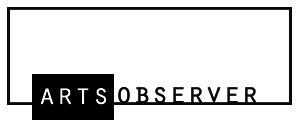WASHINGTON, DC—In iona rozeal brown‘s paintings, black is beautiful and with her added twist of Japanese accoutrements, it is gorgeous (and symbolic and complicated). On her website, brown states that her work depicting anonymous courtesans and geishas “explores the theme of afro-asiatic allegory, addressing the global influence of african american culture as fetish.” From brown’s bi-cultural interpretations to Rob Fishcher‘s sculpture replicating a fishing boat from his native Minnesota and Kerry James Marshall’s boat images referencing the transatlantic slave trade, the modern and contemporary works currently on view from the Corcoran Gallery of Art‘s collection are rife with metaphor and a pleasure to view and contemplate.
All photos © Arts Observer

Above, Detail of “They Shoot Horses, Don’t They?” 2008 (steel, mirror, glass, paint, light bulb) by Rob Fischer; In background, “Untitled,” 1960 (soot on muslin attached to a painted metal frame) by Lee Bontecou. Top of page, Detail of “afro.died, T,” by iona rozeal brown.

“Reverential and Needy,” 1991 (acrylic and enamel on mahogany) by Lari Pittman.

Detail of “Voyager,” 1992 (acrylic and collage on canvas) by Kerry James Marshall
According to the Corcoran, “In the mid-1990s, Kerry James Marshall began using water and boats as metaphors for spiritual transformation, the African Diaspora, and the Middle Passage. Voyager alludes to the schooner Wanderer, the last ship to secretly carry African slaves to the United States.”

Side view of “Coleman’s Cafe (I),” 1982 (mixed media, painted wood, clay soil) by William Christenberry; In background, from left, “Voyager” by Kerry James Marshall and “Reverential and Needy” by Lari Pittman.
The structure “documents the vernacular landscape of Hale County (in rural Alabama), where Christenberry was born in 1936,” according to the museum. “‘Coleman’s Cafe’ is painstakingly constructed from photographs Christenberry made of the actual site over many years, and sits on a bed of red Alabama earth.”

“Coleman’s Cafe (I)” by William Christenberry; In background, Auvers-Sur-Oise (Crow in the Wheat Field), 1981 (acrylic on canvas) by Robert Colescott.

Installation view of “afro.died, T,” 2011 (acrylic, pen, ink, marker and graphite on birch panel) by iona rozeal brown.

Detail of “Hand Held” by Jane Hammond.

“Hand Held,” 1996 (oil and mixed-media on canvas) by Jane Hammond.

Installation view of “They Shoot Horses, Don’t They?” by Rob Fischer; In background, from left, “Theophrastus Garden 2,” 1982 (oil on linen) by Terry Winters and “The Realm of the Quaint,” 1988 (oil on canvas) by Jonathan Lasker.
“Rob Fischer’s sculptures refer to the vernacular structures of his native Minnesota landscape: ice houses, cabins, dumpsters, and in this case, fishing boats,” according to the Corcoran. “They Shoot Horses, Don’t They? is abstracted and upended, its sides pulled apart, its glass and mirrored skin cracked and unevenly reflecting the world around it. Handmade from found materials and industrial scrap, Fischer’s rusted, beat-up boat evokes thoughts on longevity, decay, tradition, and transience.”

Installation view of “They Shoot Horses, Don’t They?” by Rob Fischer; In background, from left, “The Realm of the Quaint” by Jonathan Lasker and “Flyer,” 1996 (oil on canvas) by Sean Scully.

